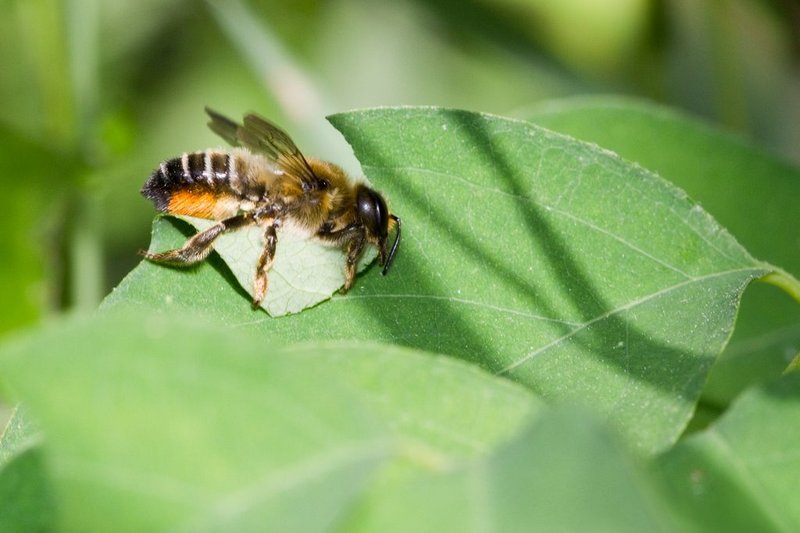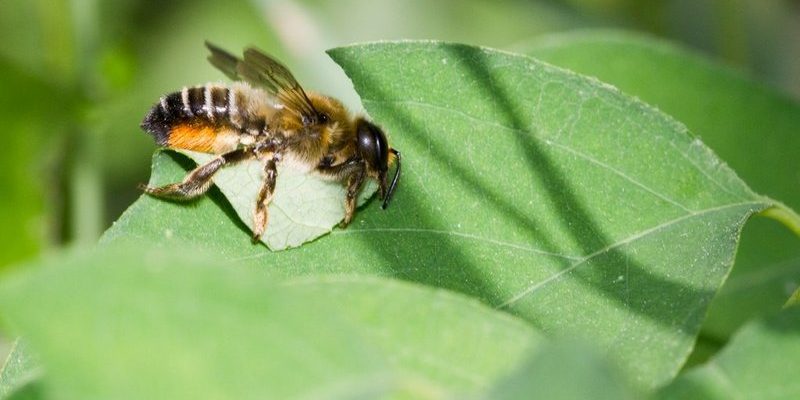
Leafcutter bees, belonging to the *Megachilidae* family, are known for their impressive leaf-cutting skills. Unlike honeybees, they don’t produce honey or live in large colonies. Instead, they are solitary bees, often seeking out materials to create their own nests. It’s like a DIY project, where each bee is both the builder and the architect of its home. Here’s the thing: understanding these bees not only highlights their importance in pollination but also sheds light on the wider world of biodiversity. Intrigued? Let’s explore some interesting facts about them.
What Makes Leafcutter Bees Unique?
Leafcutter bees are remarkable for several reasons. Firstly, their method of nest building is quite extraordinary. They cut circular pieces from leaves, flowers, or even some plants, and use them to line their nests. This isn’t just random behavior; each cut serves a purpose, offering protection and insulation for their young. Picture how a blanket keeps you warm; the leaf pieces do the same for bee larvae.
Moreover, their body structure is adapted for this unique task. Leafcutter bees are typically robust and have specialized hairs on their hind legs that help them carry leaf fragments. They are often confused with bumblebees, but these little guys are generally smaller and look a bit different. Their efficiency in cutting and carrying is quite impressive and makes them stand out in the insect kingdom.
The Role of Leafcutter Bees in Pollination
You might be wondering why leafcutter bees are important beyond their leaf-cutting skills. Well, they are also fantastic pollinators! As they gather nectar and pollen from flowers, they facilitate the pollination process, which is crucial for plant reproduction. This means they play a significant role in growing fruits, vegetables, and various plants.
Interestingly, they are attracted to a variety of flowers, which can include wildflowers and cultivated plants. This diverse diet allows them to pollinate a broader range of flora. As a result, they help maintain a healthy ecosystem, supporting not just their species but many others as well. It’s like having a personal assistant for your garden!
Where Do You Find Leafcutter Bees?
Leafcutter bees are found in various habitats across the globe. They thrive in areas rich in flowers, which provides them with the nectar and pollen they need. You can spot them buzzing around in gardens, parks, and even farms. They particularly enjoy native plants, which often have deep flowers that accommodate their foraging habits.
One of the best places to observe them is in your own backyard. By planting flowering plants that bloom at different times throughout the season, you can attract these busy bees. Not only will you enjoy their gentle buzzing, but you’ll also be contributing to their habitat. It’s like throwing a welcome party for nature’s tiny gardeners!
Interesting Leafcutter Bee Behavior
Leafcutter bees exhibit some behaviors that are downright fascinating. For instance, after cutting the leaves, they transport them back to their nests in a unique way: by holding the leaf piece under their belly. This allows them to move quickly and avoid predators while balancing their precious cargo.
Additionally, these bees are quite methodical. When they find a suitable plant, they will often take only a small amount, ensuring that the plant can continue to thrive. This sustainable approach shows their awareness of the ecosystem around them, which is something we can all learn from. It’s not just about taking; it’s about maintaining balance.
Leafcutter Bees and Their Nests
Now, let’s talk about where leafcutter bees make their homes. Unlike honeybees, which live in hives, leafcutter bees create individual nests in various locations. These can be found in hollow stems, cracks in wood, or even in the ground. Once they’ve gathered enough leaf pieces, they craft small chambers within the nest, laying one egg in each chamber.
The cells are filled with nectar and pollen to feed the developing larvae. Imagine setting up a cozy nursery for your little ones; that’s precisely what these bees do! After laying the eggs, the mother bee seals off each cell, ensuring a safe environment for the young bees until they emerge.
How to Support Leafcutter Bees
If you’d like to support these incredible bees, there are simple steps you can take. Start by planting a diverse range of flowering plants that bloom at different times throughout the season. Native plants are particularly beneficial, as they provide food sources that leafcutter bees have evolved alongside.
Another great way to help is to create a suitable nesting environment. You can leave some areas of your garden undisturbed, allowing patchy bare soil or hollow stems to remain. Alternatively, consider building or buying bee hotels that mimic the natural nesting sites of these delightful insects. It’s a perfect way to give them a cozy home while enjoying their presence in your garden.
Leafcutter bees are truly fascinating creatures that deserve our attention and admiration. From their unique building methods to their essential role in pollination, they enrich our environment in countless ways. By learning more about these remarkable little bees and taking steps to support them, we can contribute to a healthier ecosystem.
So, the next time you spot a busy leafcutter bee buzzing around your garden, give it a nod of appreciation. After all, these tiny carpenters aren’t just hard at work; they are vital players in the intricate web of life. Let’s celebrate and protect them, one leaf at a time!

